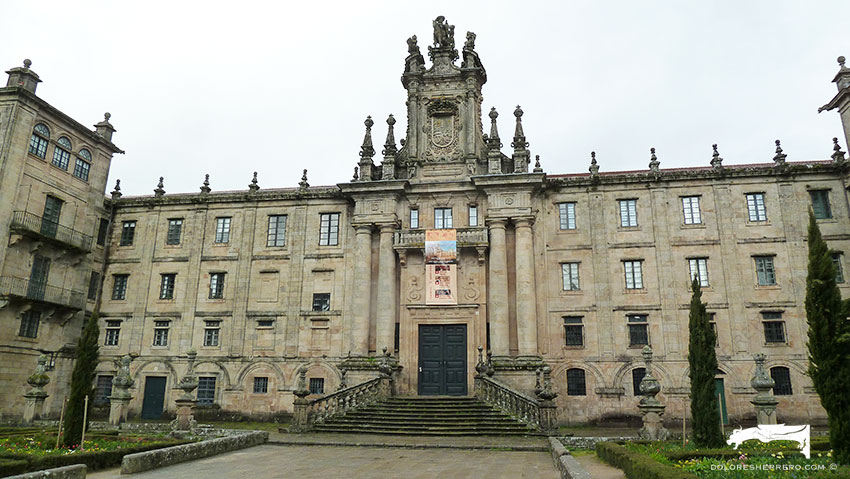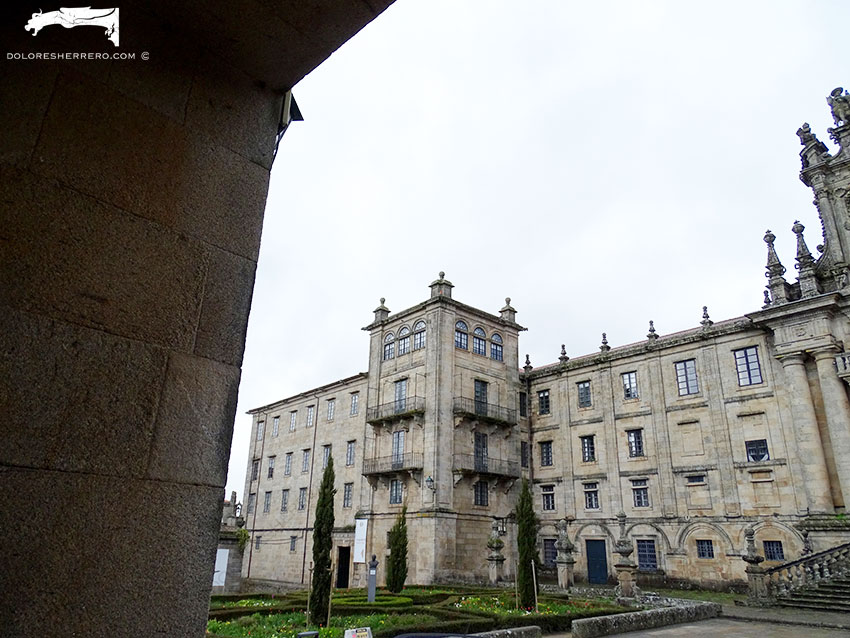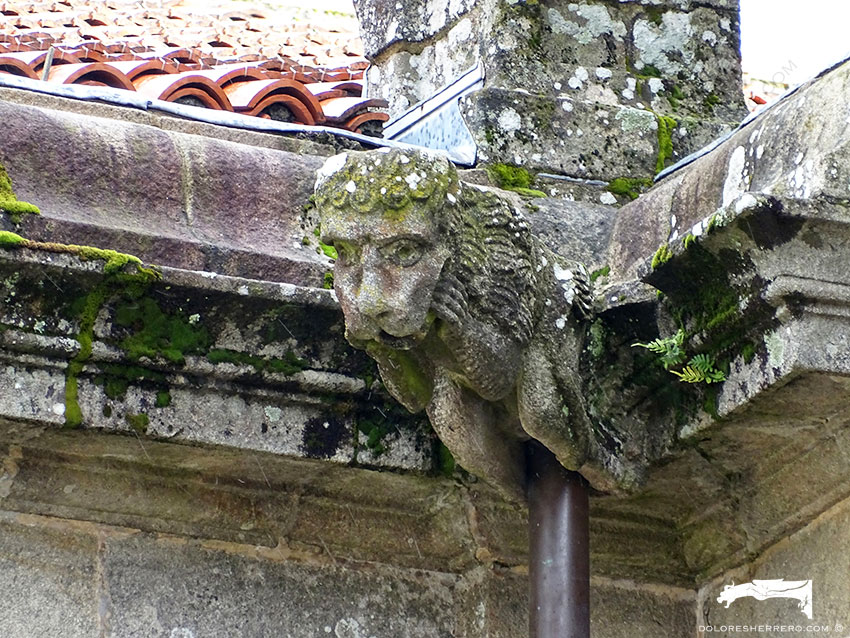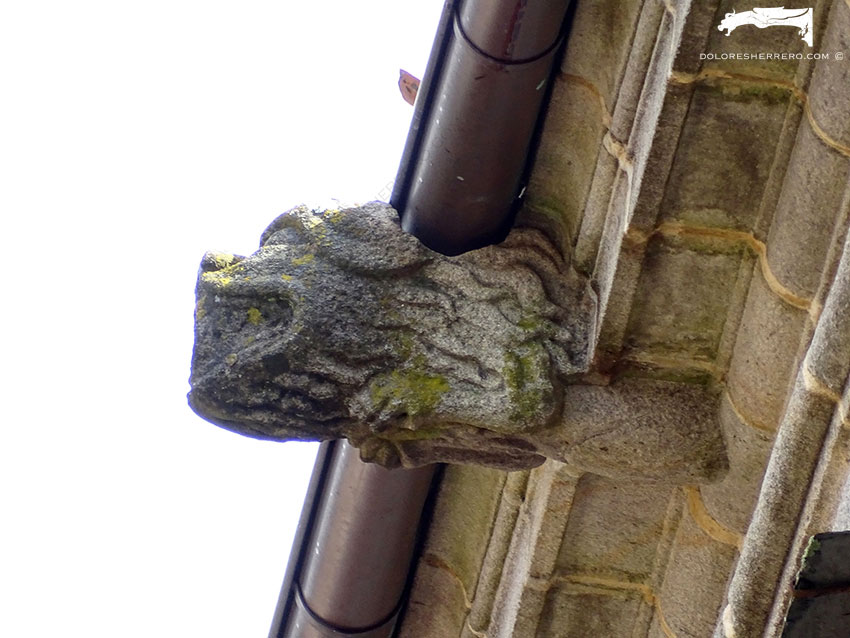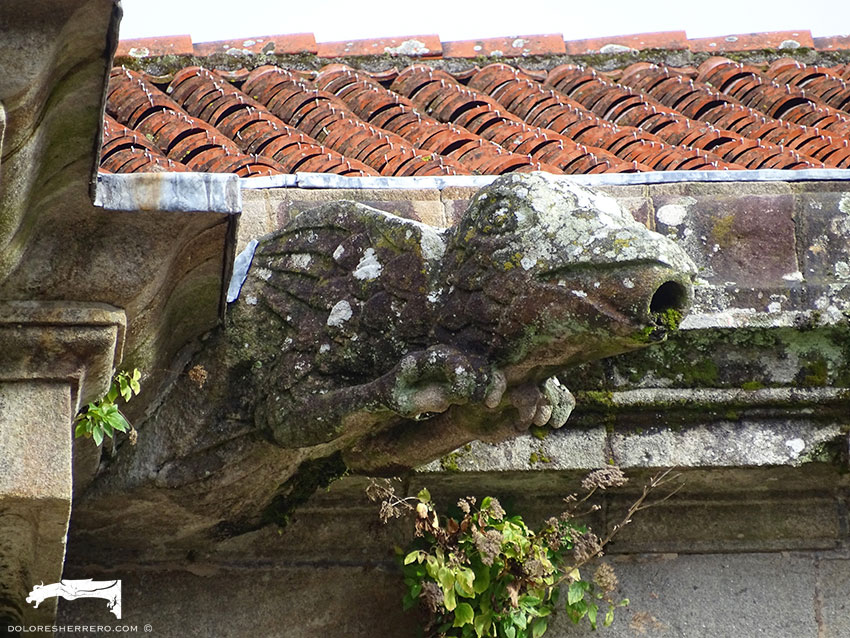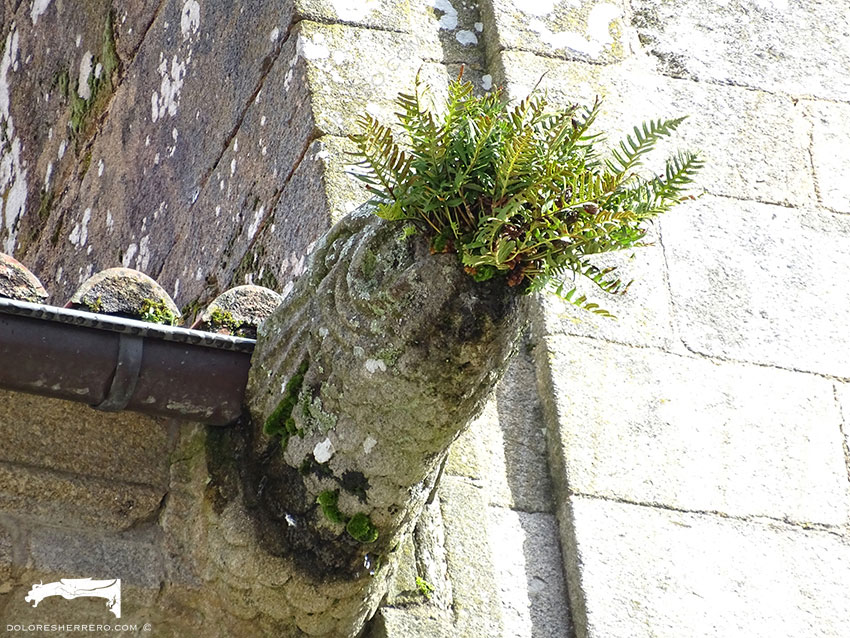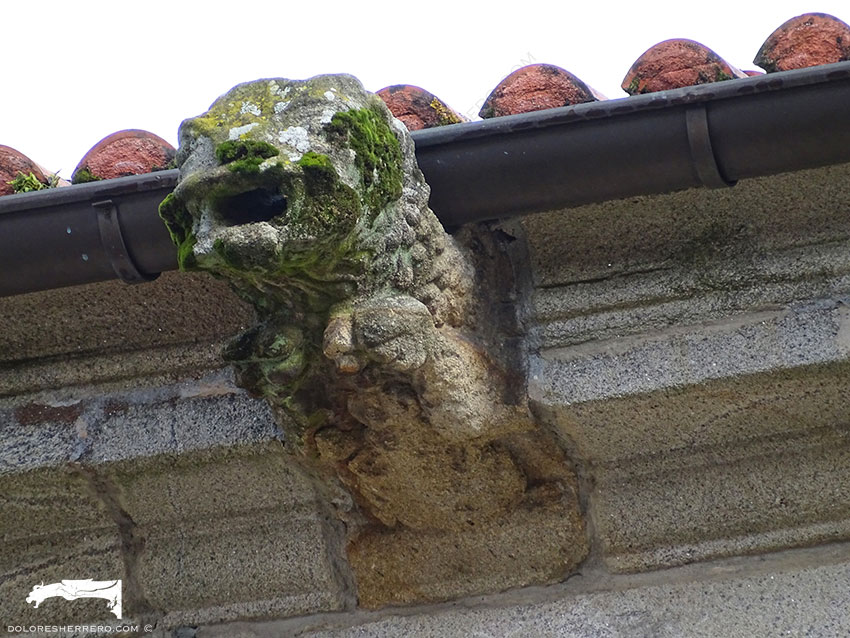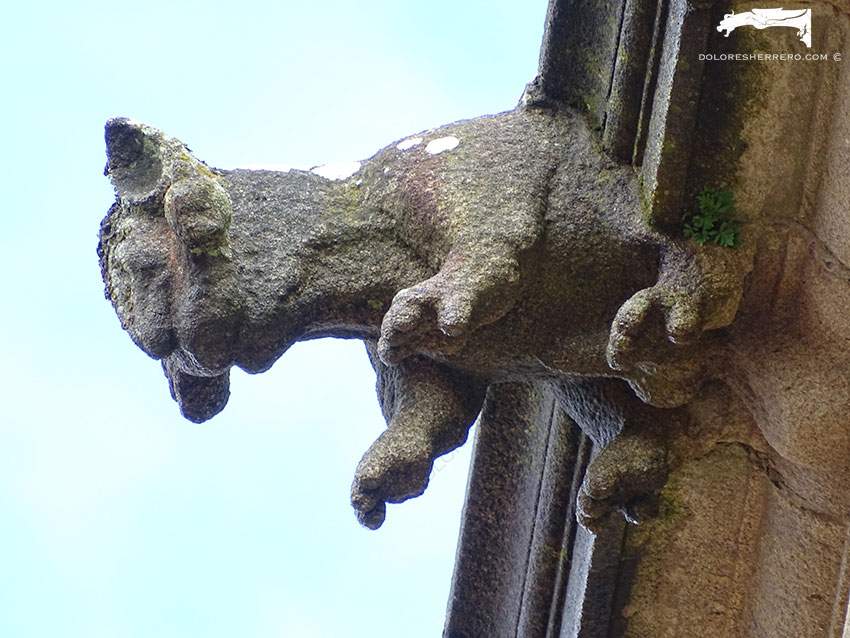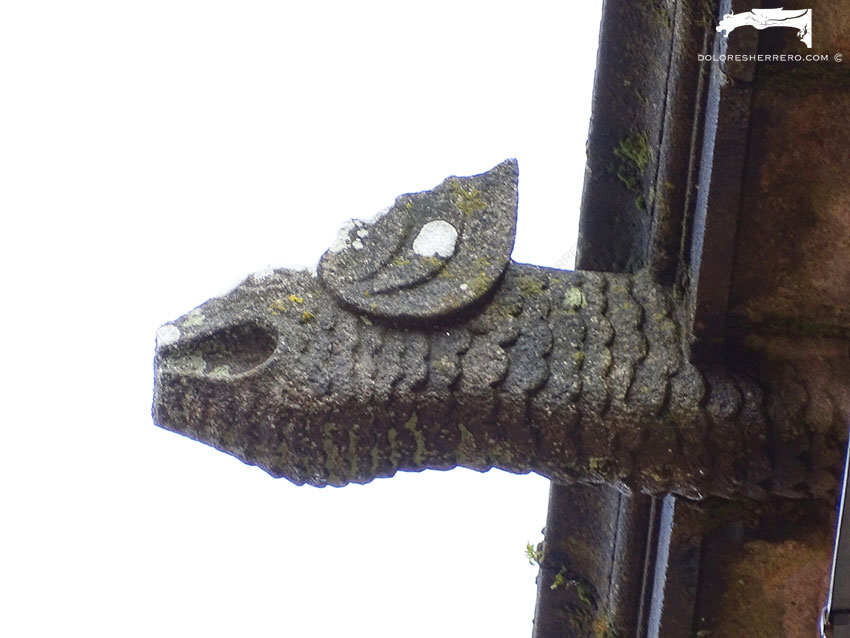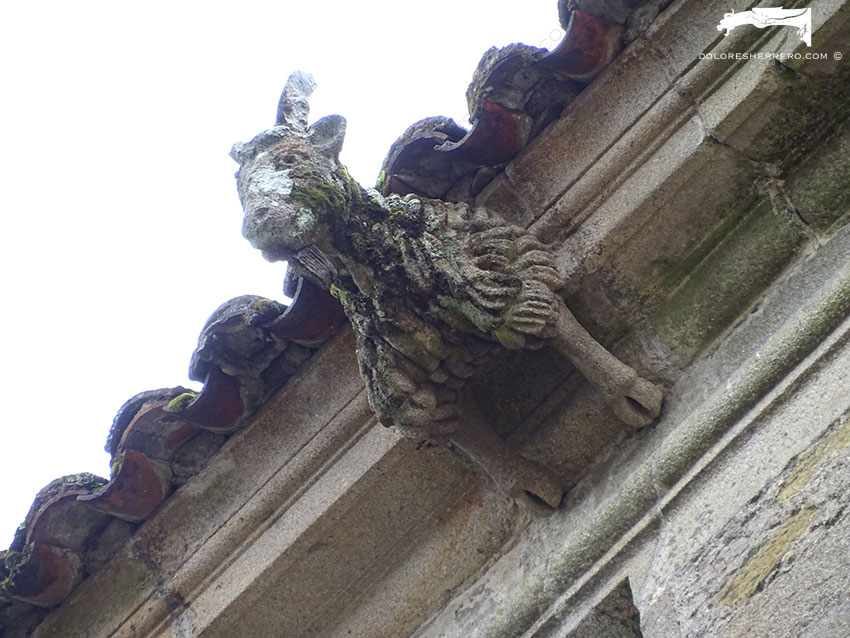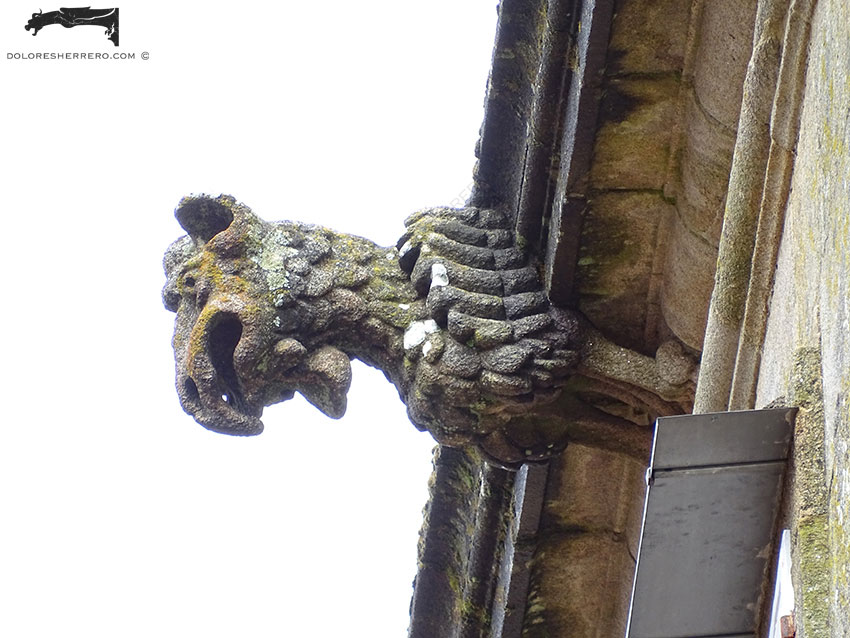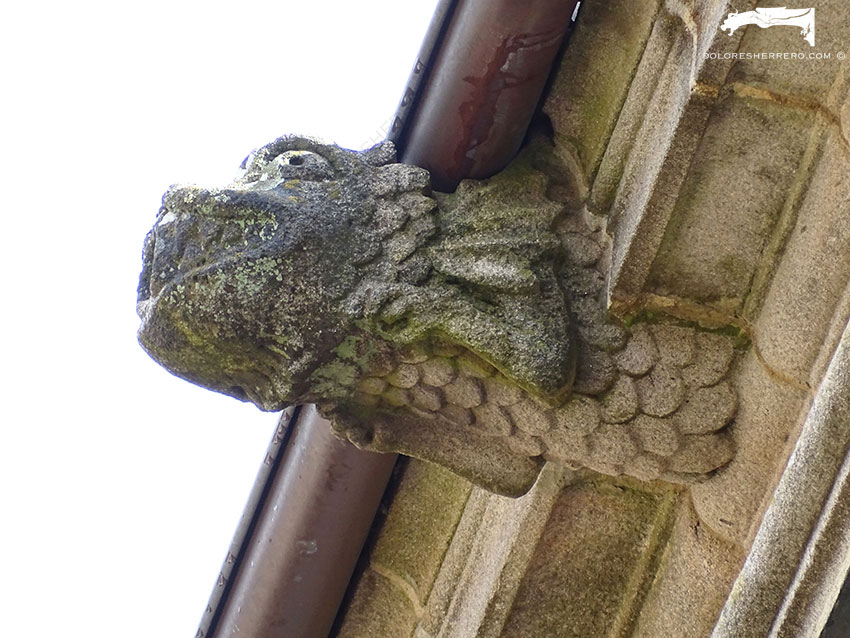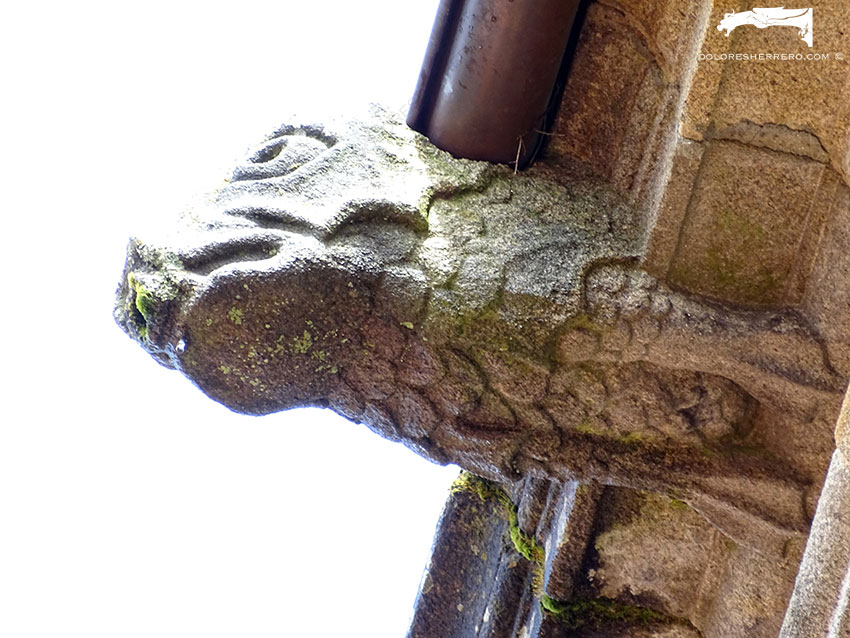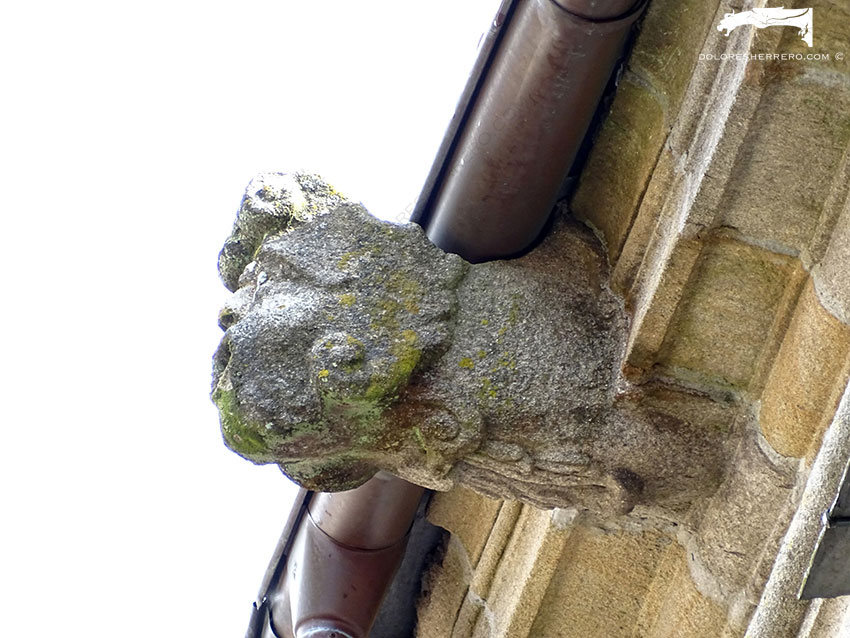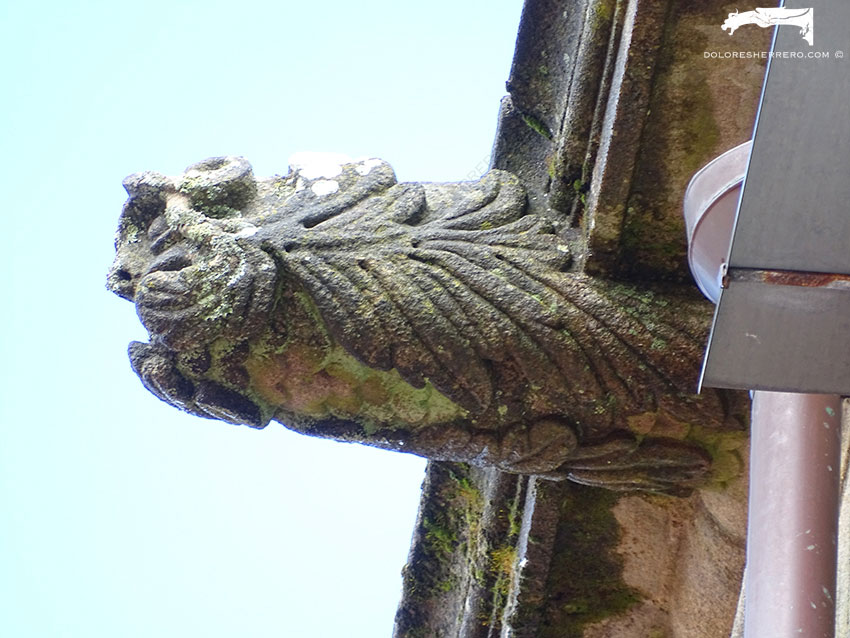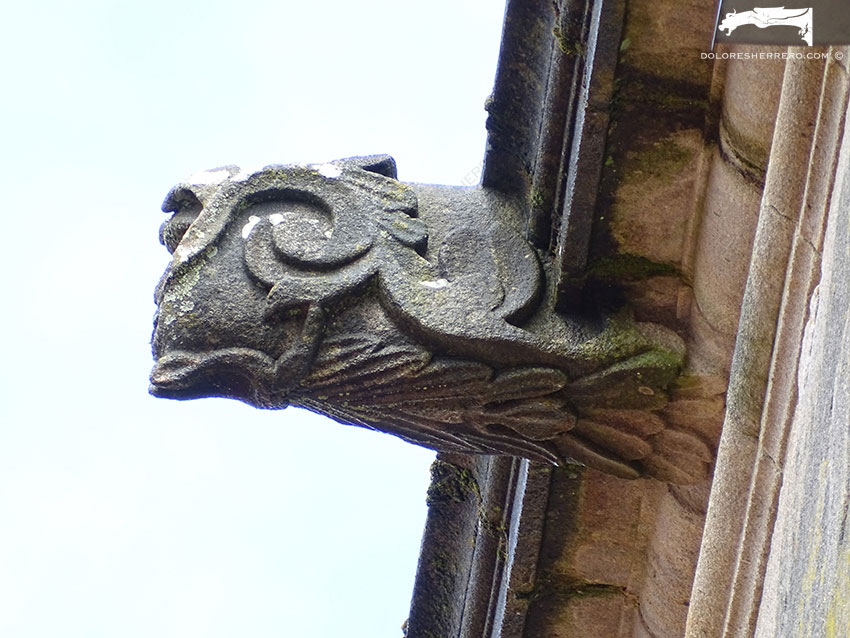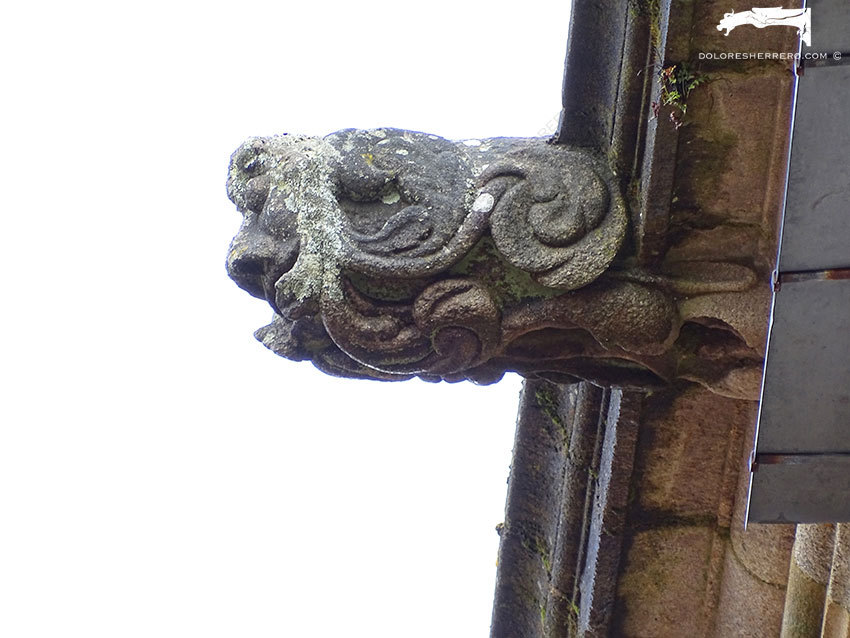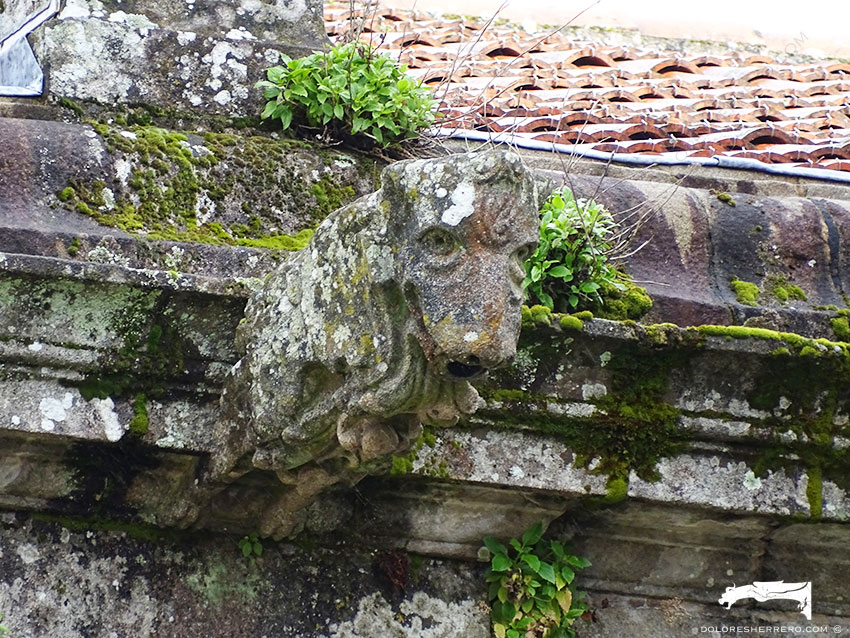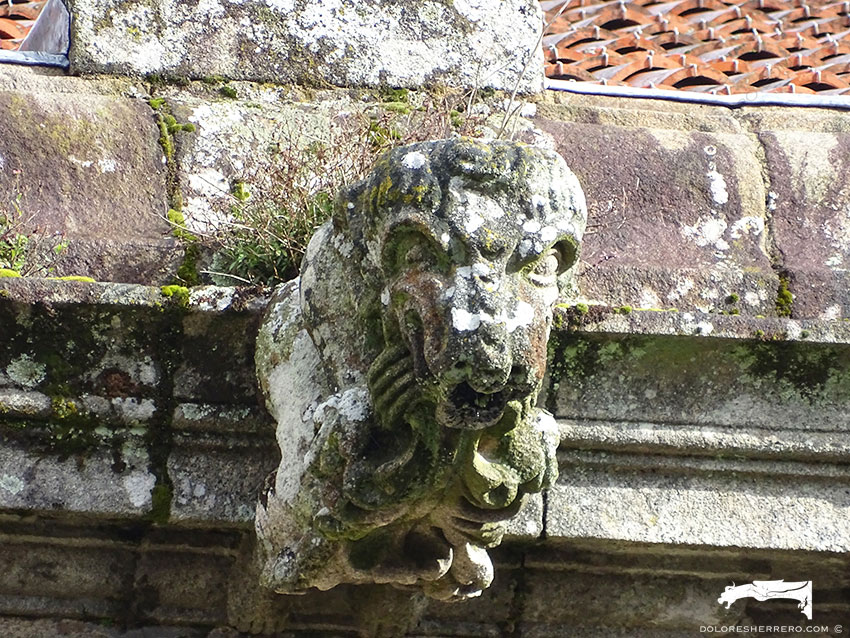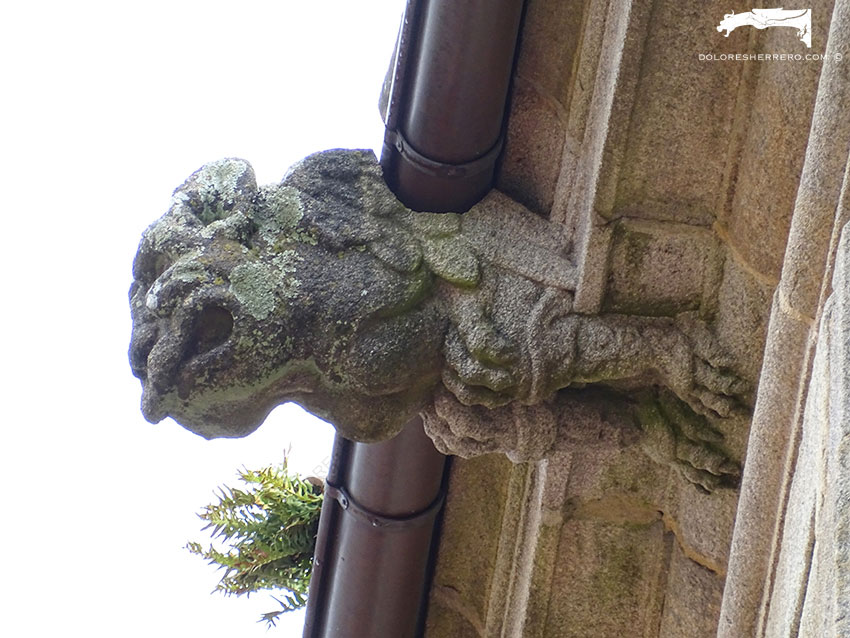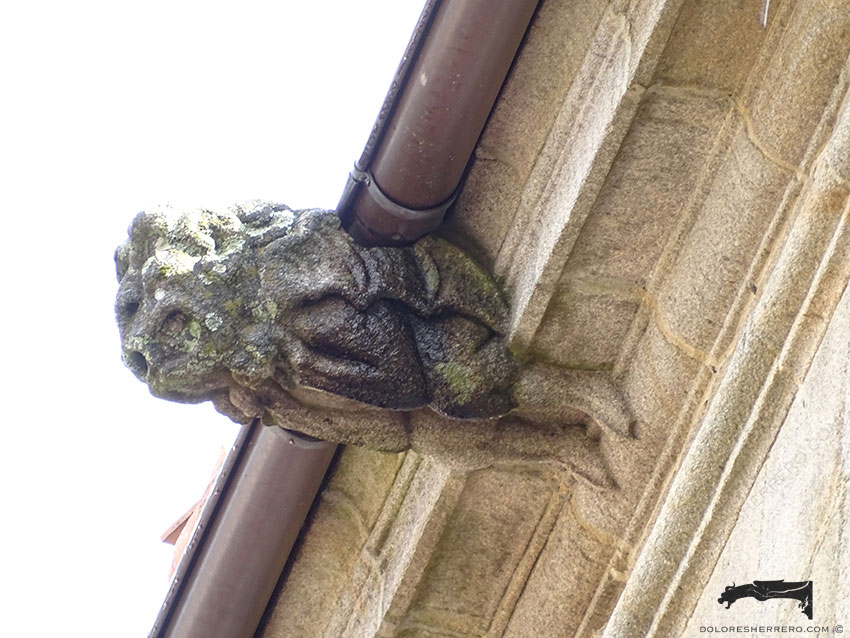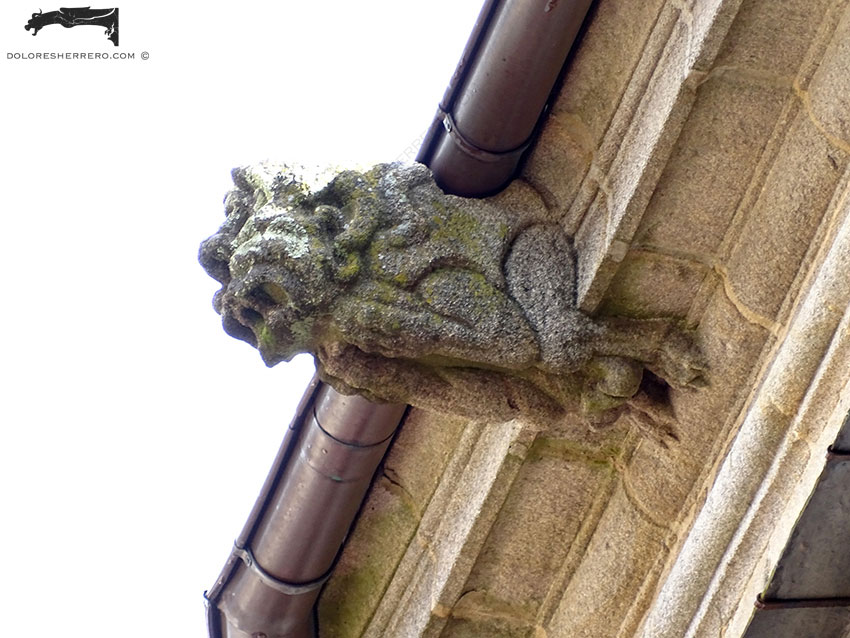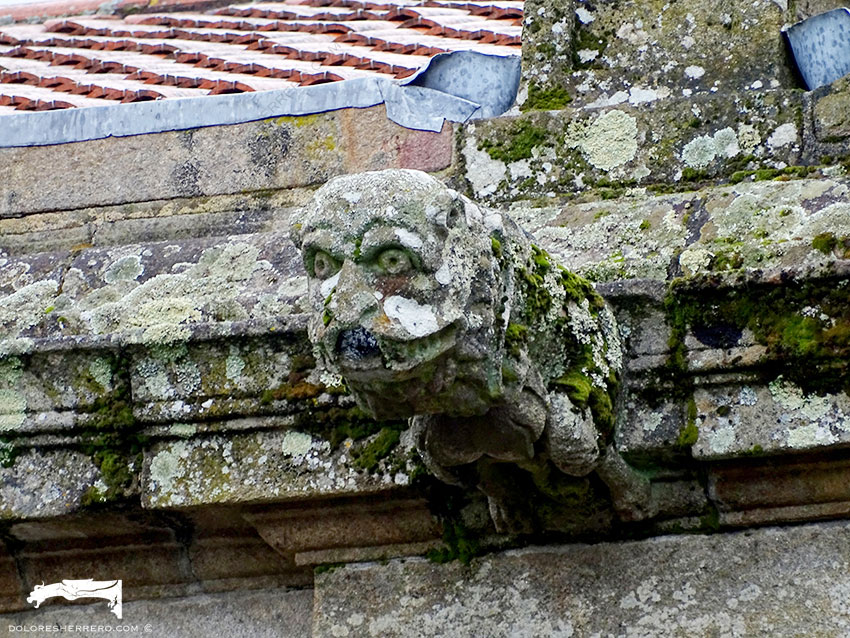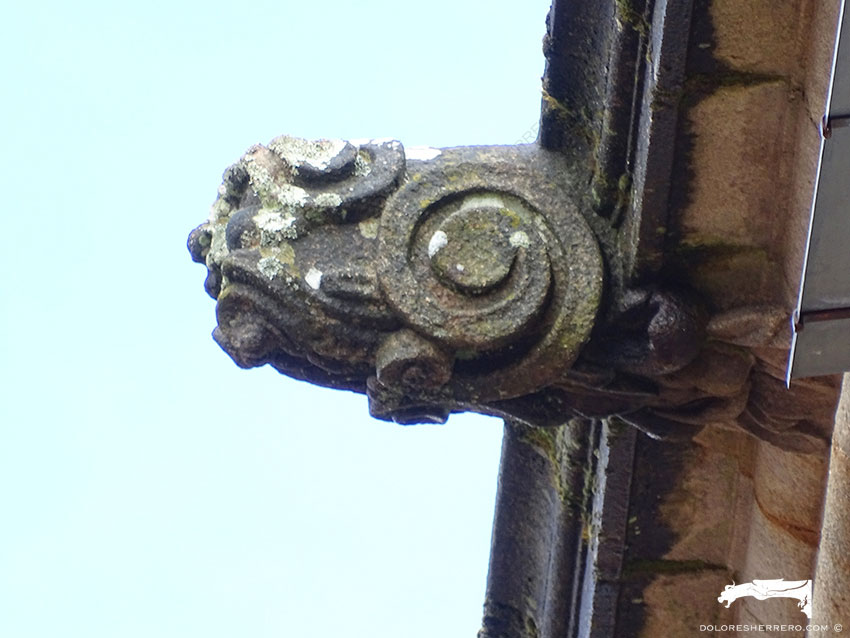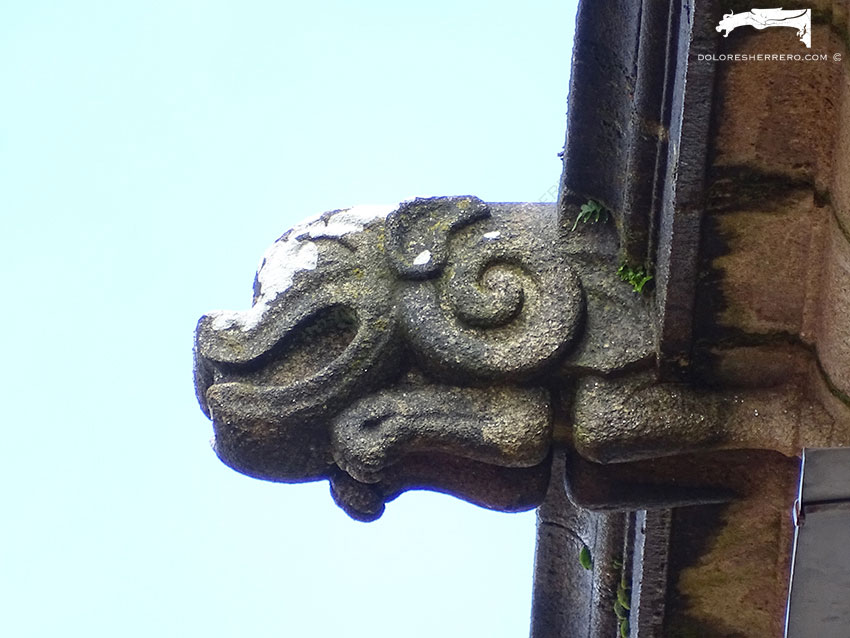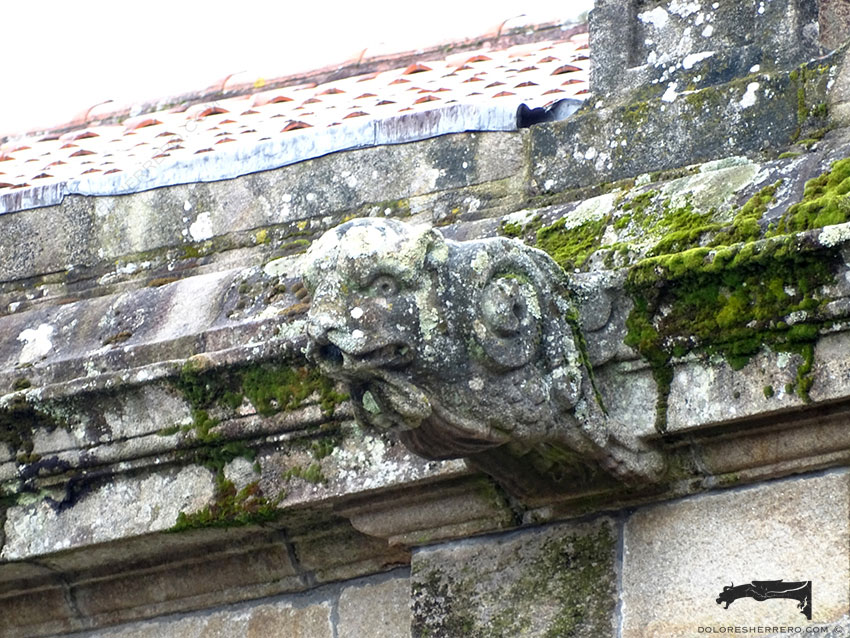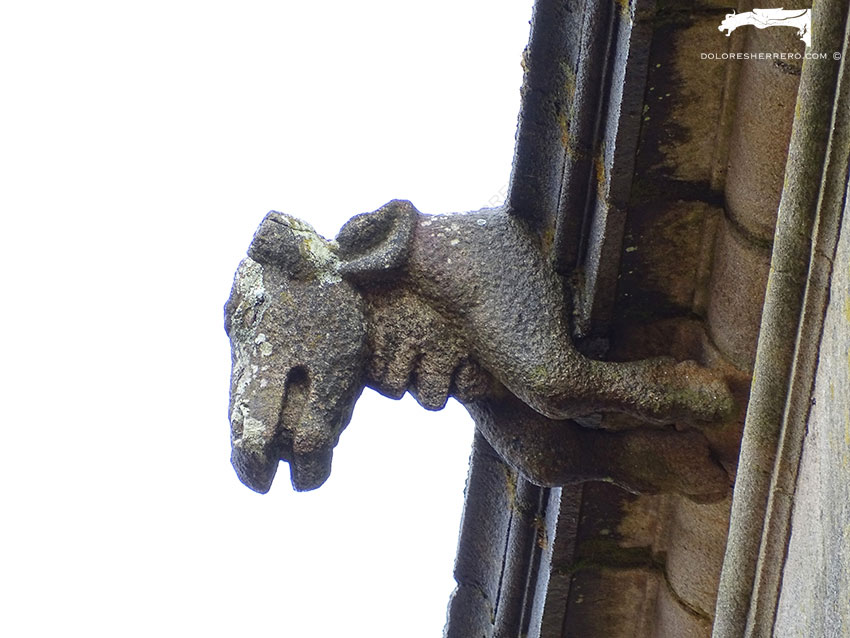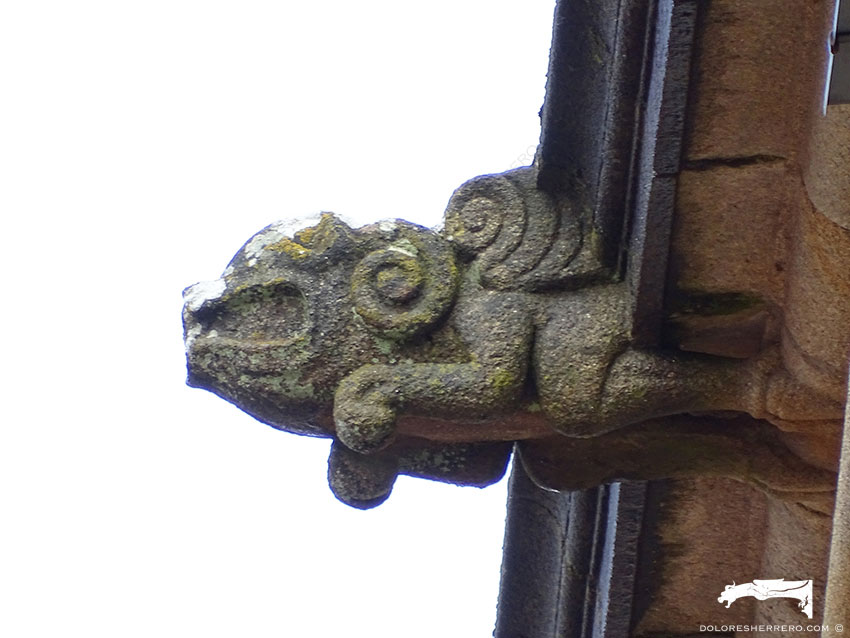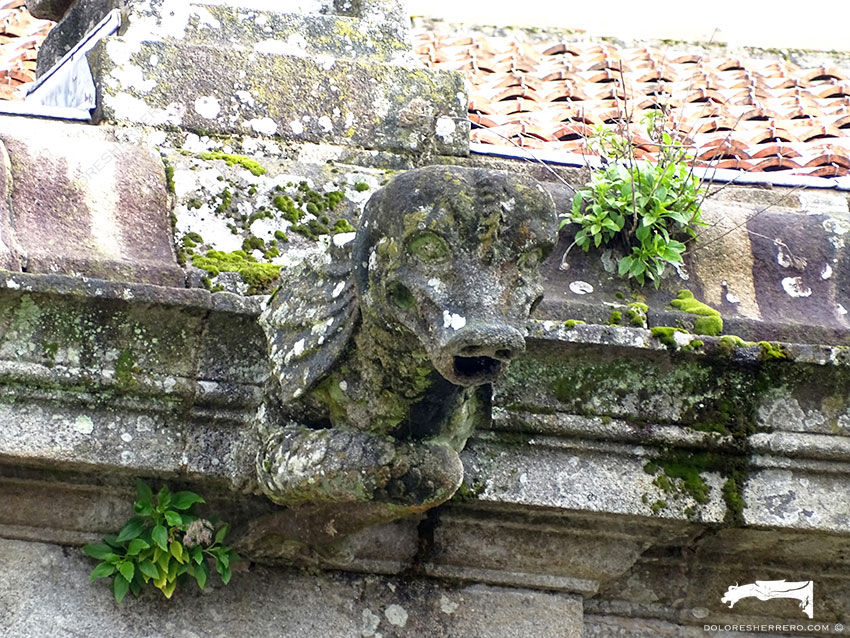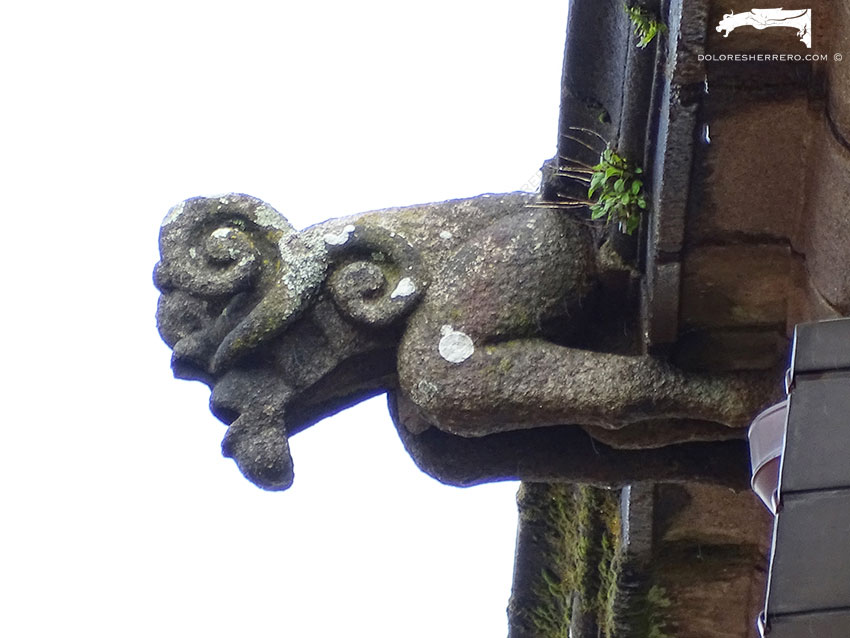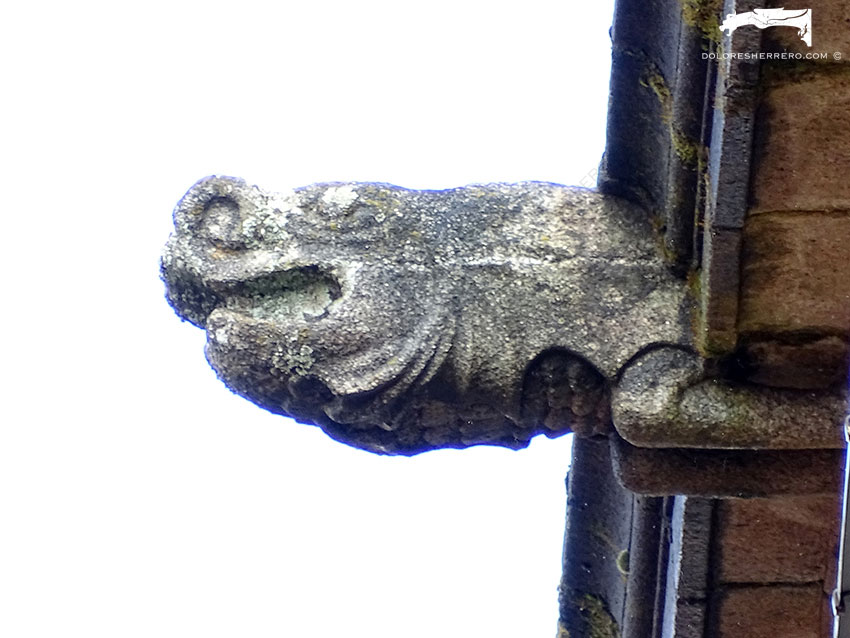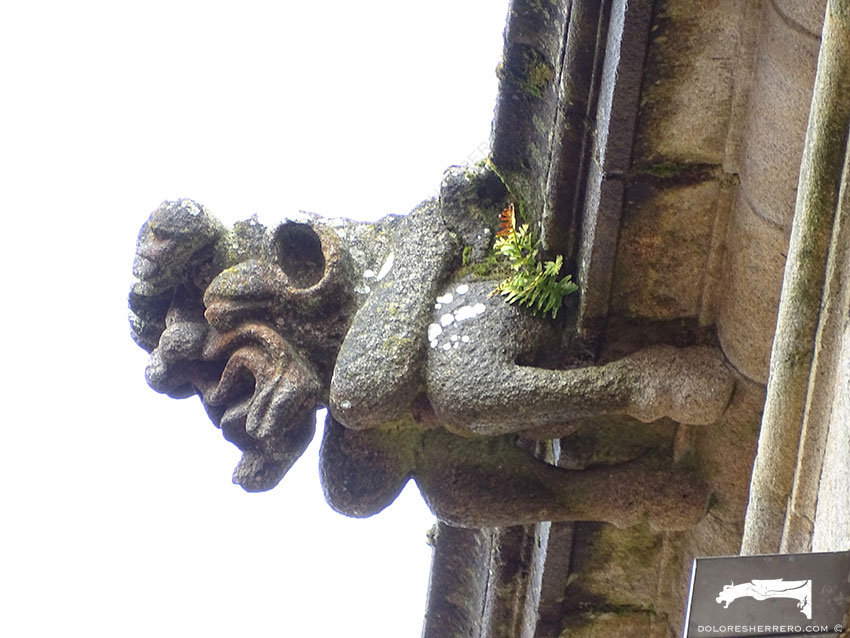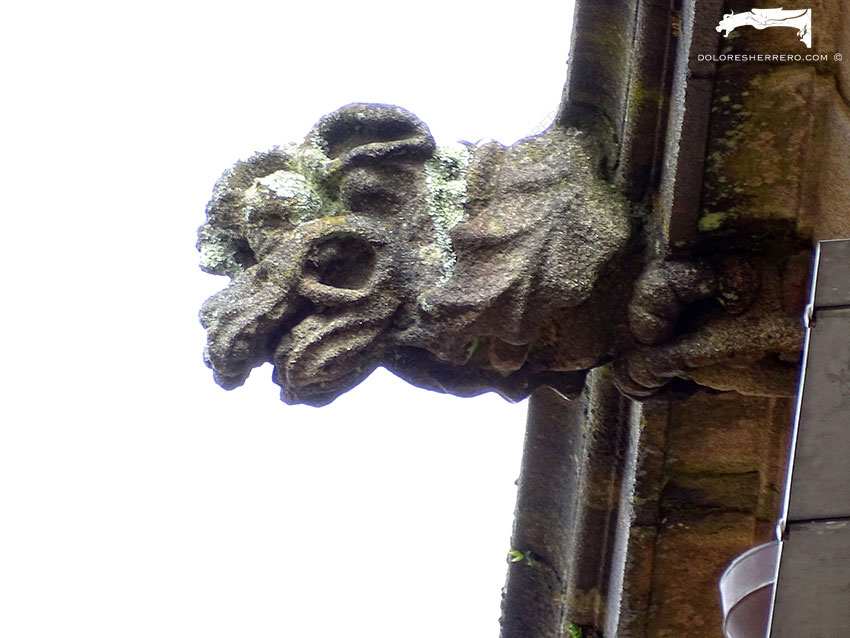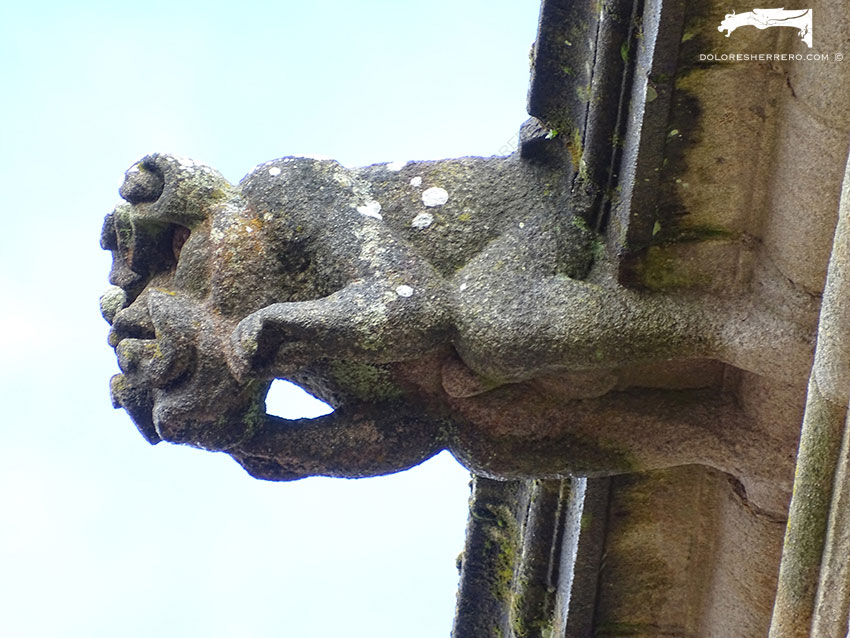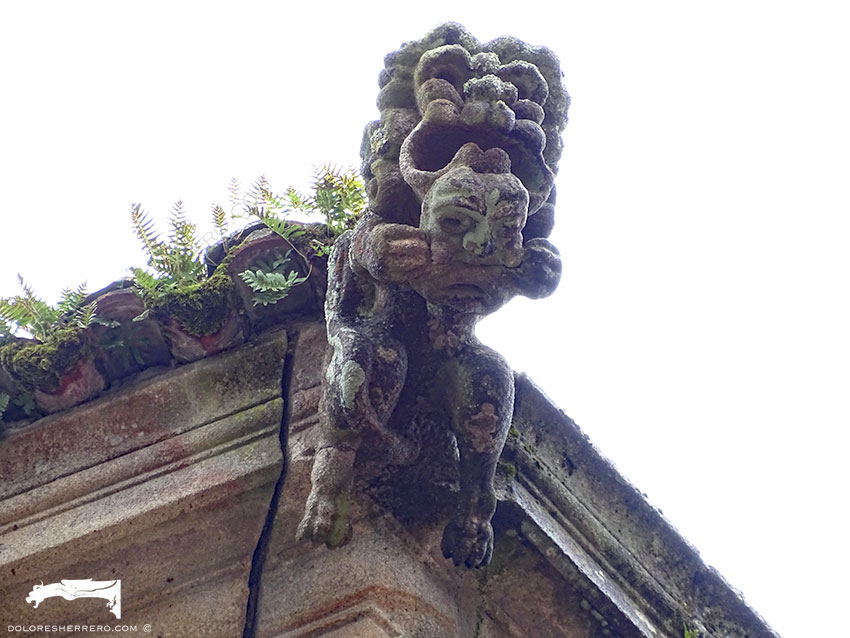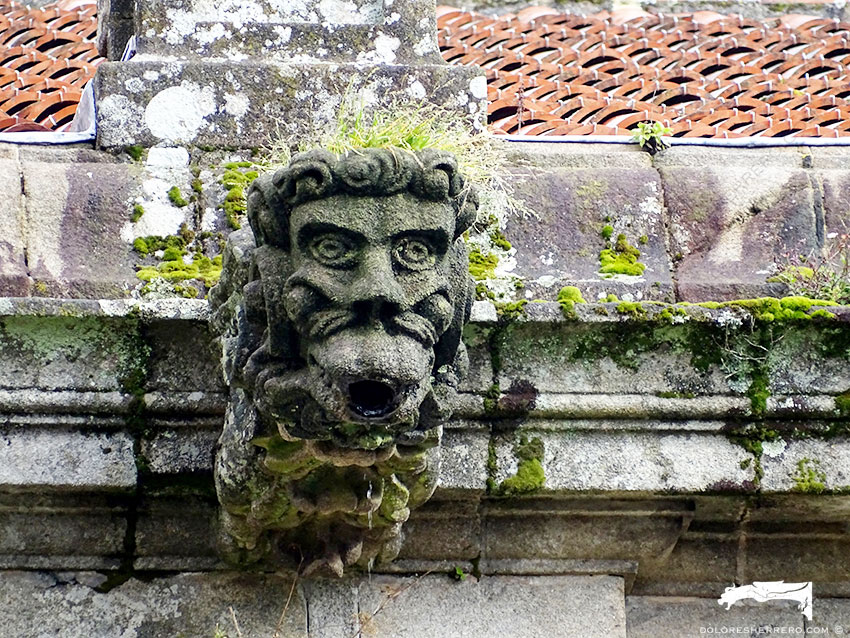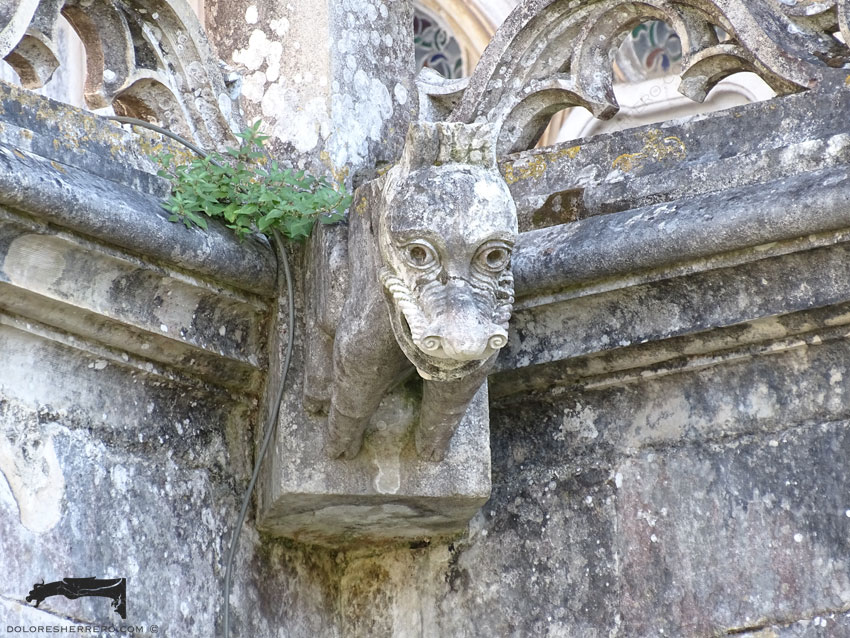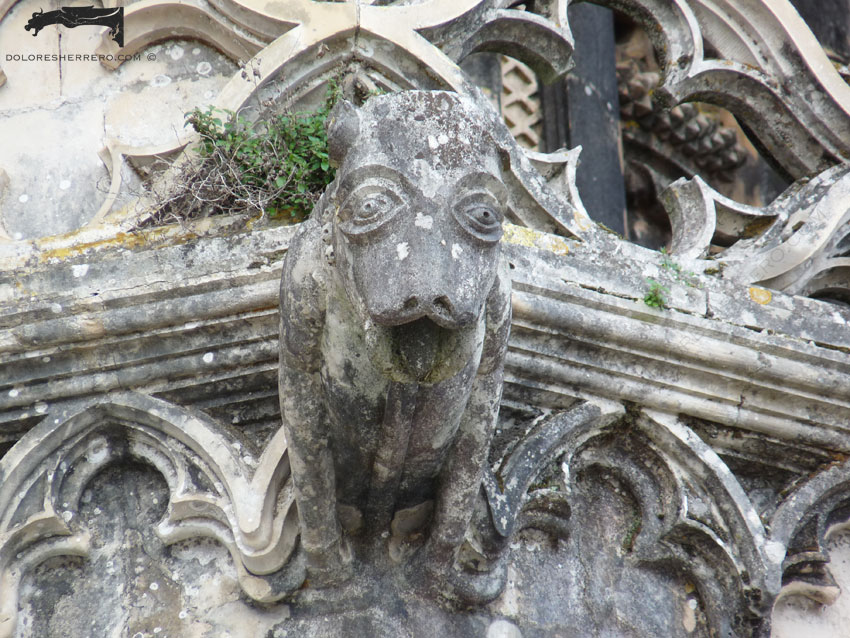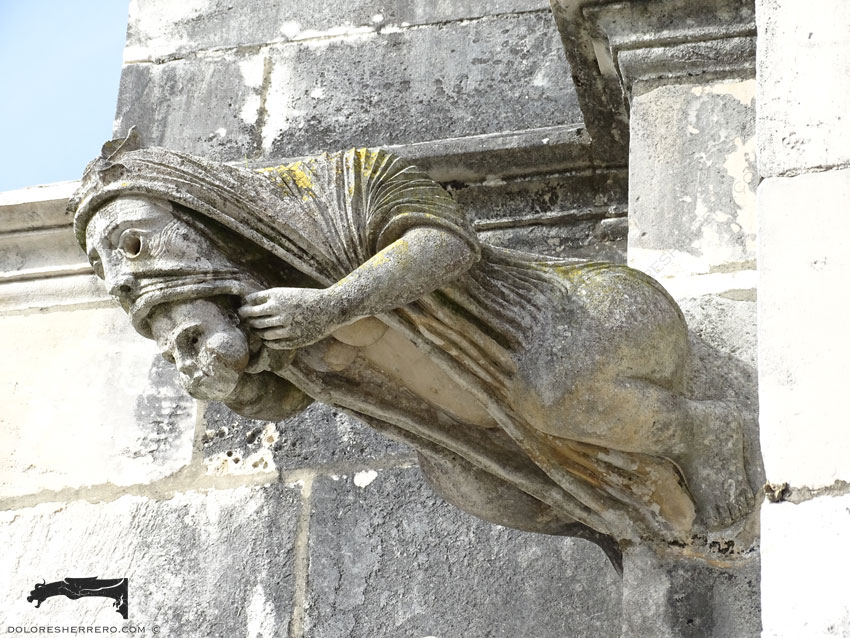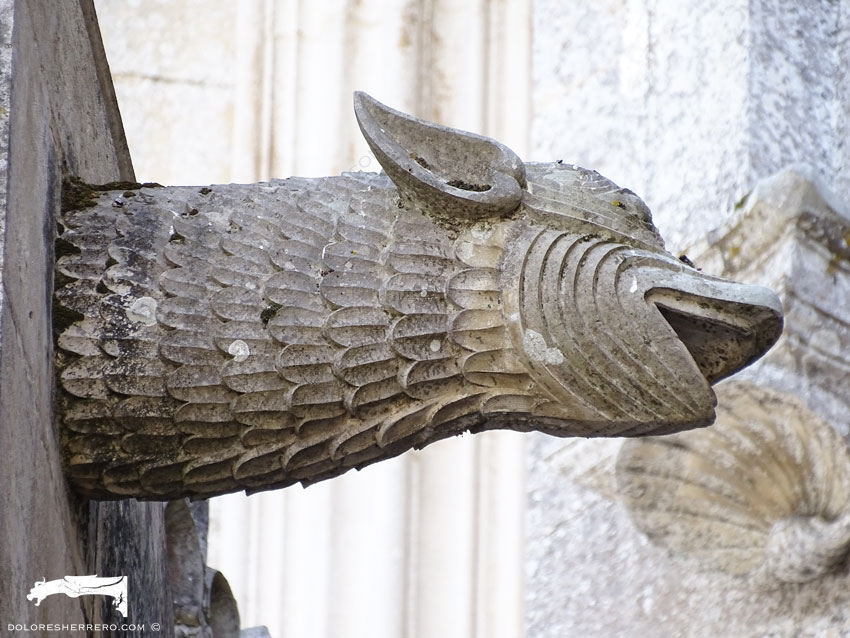In this post, we continue with the gargoyles of one of the most magnificent Baroque monasteries in Galicia (Spain): San Martín Pinario. In the first post, we were already able to see some of its amazing gargoyles and grotesques.
Recall that although it was originally a Benedictine monastery in the 10th century, reconstruction began in the late 16th century and was completed in the 18th century. It ceased to be a monastery in the late 19th century, and the building now houses the major seminary of the Archdiocese de Santiago, the Theological Institute of Compostela, the Diocesan Archives and the University School of Social Work and Theology, as well as providing guest accommodation and serving as a venue for cultural events.
Gargoyles
Today we are going to show you the rest of the gargoyles and grotesques of this superb monastery. Once again, we will discover beings of fantastic nature and with exuberant ornamentation. The typological variety is impressive once more: an astonishing bestiary, mythological beings, monsters, and demons.
Although we have grouped them according to the traits and characteristics of each typology, almost all of them possess fantastic and somewhat surreal elements, so they could be encompassed within a single and fabulous typology or theme.
There are animals such as the lion, bird, dog, pig, fish, donkey, and goat.
- Monasterio de San Martín Pinario (Santiago de Compostela)
- Monasterio de San Martín Pinario (Santiago de Compostela)
- Monasterio de San Martín Pinario (Santiago de Compostela)
- Monasterio de San Martín Pinario (Santiago de Compostela)
- Monasterio de San Martín Pinario (Santiago de Compostela)
- Monasterio de San Martín Pinario (Santiago de Compostela)
- Monasterio de San Martín Pinario (Santiago de Compostela)
- Monasterio de San Martín Pinario (Santiago de Compostela)
- Monasterio de San Martín Pinario (Santiago de Compostela)
- Monasterio de San Martín Pinario (Santiago de Compostela)
- Monasterio de San Martín Pinario (Santiago de Compostela)
- Monasterio de San Martín Pinario (Santiago de Compostela)
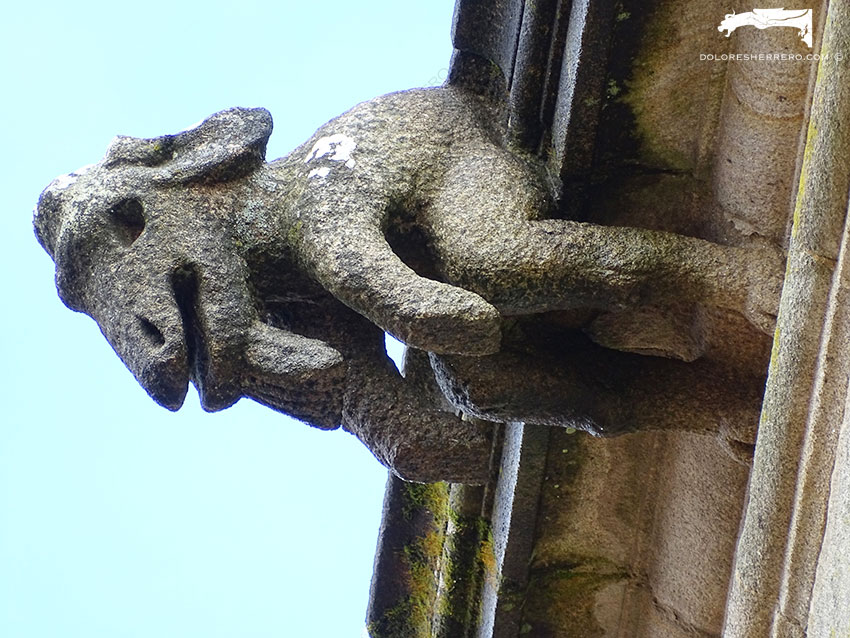
The animal monsters, or hybrids, are also exceptional.
Of particular note are the astounding plant monsters, fantastical figures with strange features such as lush foliage on their heads and bodies, plumage, large acanthus-type leaves and single or double spirals on their wings, body and nose. Some look like a green man.
- Monasterio de San Martín Pinario (Santiago de Compostela)
- Monasterio de San Martín Pinario (Santiago de Compostela)
- Monasterio de San Martín Pinario (Santiago de Compostela)
- Monasterio de San Martín Pinario (Santiago de Compostela)
- Monasterio de San Martín Pinario (Santiago de Compostela)
- Monasterio de San Martín Pinario (Santiago de Compostela)
- Monasterio de San Martín Pinario (Santiago de Compostela)
- Monasterio de San Martín Pinario (Santiago de Compostela)
- Monasterio de San Martín Pinario (Santiago de Compostela)
- Monasterio de San Martín Pinario (Santiago de Compostela)
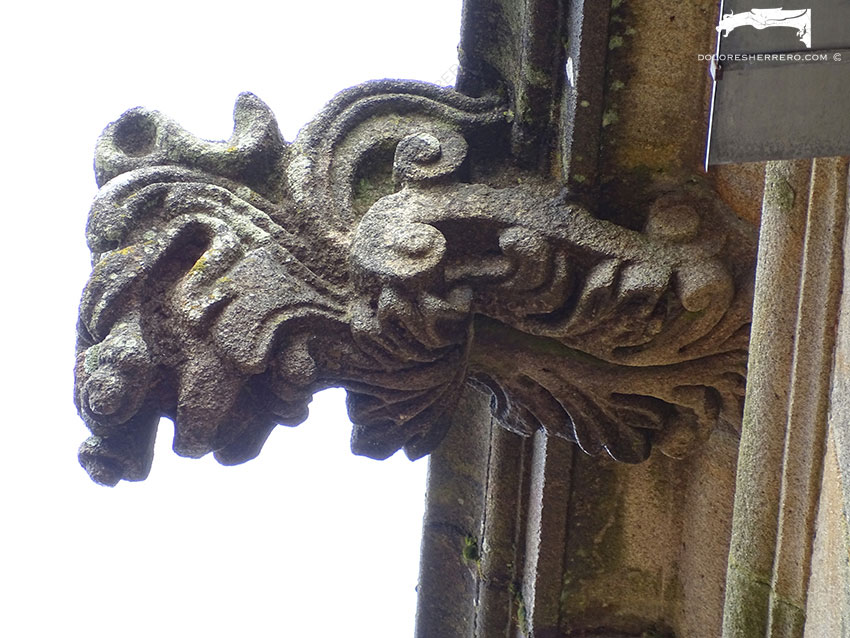
Now we are going to turn to the incredible and fascinating devil figures that leap out from the monastery walls. Notable among their features are flaps of skin and protuberances on their heads and bodies, women’s breasts, membranous wings, hooves, claws, prominent eyebrows, elongated muzzles, tusks, wings in a spiral, scales, caruncles, prominent windpipes, horns on the head or nose, front crests, coiled snakes’ tails, double horns, dragonish bodies, genital displays, tails, deformed bodies and leaf-type wings.
Their expressions and postures are also unusually striking. There are quite a few figures that are rampant, seated or sticking out their tongues, that depict movement, or that have their hands in their mouths, at their throats or on their faces.
- Monasterio de San Martín Pinario (Santiago de Compostela)
- Monasterio de San Martín Pinario (Santiago de Compostela)
- Monasterio de San Martín Pinario (Santiago de Compostela)
- Monasterio de San Martín Pinario (Santiago de Compostela)
- Monasterio de San Martín Pinario (Santiago de Compostela)
- Monasterio de San Martín Pinario (Santiago de Compostela)
- Monasterio de San Martín Pinario (Santiago de Compostela)
- Monasterio de San Martín Pinario (Santiago de Compostela)
- Monasterio de San Martín Pinario (Santiago de Compostela)
- Monasterio de San Martín Pinario (Santiago de Compostela)
- Monasterio de San Martín Pinario (Santiago de Compostela)
- Monasterio de San Martín Pinario (Santiago de Compostela)
- Monasterio de San Martín Pinario (Santiago de Compostela)
- Monasterio de San Martín Pinario (Santiago de Compostela)
- Monasterio de San Martín Pinario (Santiago de Compostela)
- Monasterio de San Martín Pinario (Santiago de Compostela)
Lastly, we would like to show you two exceptional gargoyles. One of them is a terrifying-looking devil with animal legs, which is holding a mask-like human face in its two hands; a truly disturbing and mysterious figure. The other is an anthropomorphic with a human head, curly hair, hooves, wings, protuberances on its body and a tusked animal’s muzzle sticking out of its mouth.
- Monasterio de San Martín Pinario (Santiago de Compostela)
- Monasterio de San Martín Pinario (Santiago de Compostela)
We must also highlight something very interesting, which is the resemblance to some gargoyles of the Monastery of Batalha in Portugal. Although this magnificent Portuguese Gothic building is earlier —construction began between 1385 and 1388— its influence is palpable. Research indicates that the monks commissioned Mateus Lopes, a Portuguese architect who had already worked on other Benedictine buildings in Galicia, to design the San Martín Pinario monastery. Many formal and thematic similarities between the gargoyles of Portugal and Spain — in this case between the monasteries of Batalha and San Martín Pinario — are probably due to exchanges between itinerant masters and workshops. These exchanges transmitted knowledge and ideas among the various professionals and guilds of both countries, even for buildings from later periods. Portugal and Spain were united not only by their geographical proximity but also by their historical influences.
The sculpting of the gargoyles is extraordinarily detailed. As we’ve seen, these are unique and original gargoyles, replete with ornamental elements, some of which approach horror vacui, a feature that can also be seen in gargoyles at Batalha.
- Batalha Monastery (Portugal)
- Batalha Monastery (Portugal)
- Batalha Monastery (Portugal)
- Batalha Monastery (Portugal)
Exuberant, terrifying, grotesque, some exhibit movement that endows them with dynamism and expressiveness, stunning, magical, fantastical, with extravagant, unreal forms. We would need infinite adjectives to describe them. In addition, the gargoyles seem “alive”, the fleshy appearance and volume of some of their bodies endows them with enormous plasticity. But above all, we find ourselves once again before examples of the lavish imagination and creative freedom of the great sculptors who produced them.
The first post dealt more with magical beings, such as the Galician lumias, sirens and harpies, which many of us might recall from the stories we read as children. With this post, we return to reminiscing about our childhood filled with fairy tales, witches, and monsters.
Galicia, a land whose folklore is populated by mythical beings (meigas, tardos, trasnos, lumias, mouras), legends, marvels and enchantments, and which is influenced by the history and art of other nearby places such as neighbouring Portugal.
But, above all, Galicia is a land of water, water that gushes forth from its fascinating gargoyles.
Bibliography consulted
FREIRE NAVAL, A., B., “Aportación documental al estudio de la actividad artística del Monasterio de San Martín Pinario y sus prioratos entre 1501 y 1854”, ADAXE-Revista de Estudios e Experiencias Educativas, 2000, 16, pp. 225-246.
VIGO TRASANCOS, A., “La iglesia monástica de San Martín Pinario en Santiago de Compostela. Proyecto, fábrica y artífices”, Separata de “COMPOSTELLANUM”, Vol. XXXVIII, Números 3-4, 1993, pp. 336-361.
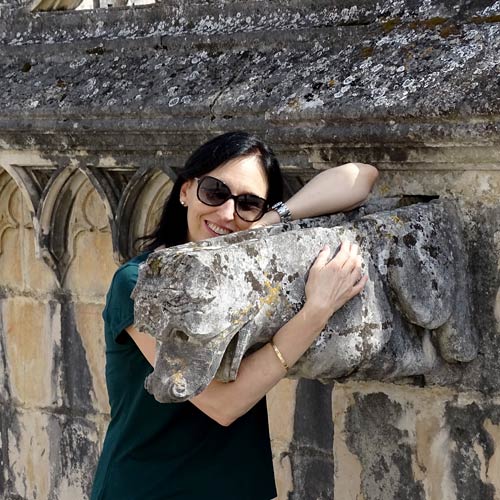
Doctor of Art History and researcher specializing in the study of gargoyles.
I am Dolores Herrero Ferrio, and my thesis, “An Approach to the Study of Gargoyles of Gothic Cathedrals in Castilla and León”, is dedicated to the study of these fascinating figures.
If you like gargoyles and art history, you will also enjoy my book, “The Gargoyle and Its Iconography,” a book I have written with great care for those interested in the world of gargoyles.
I have created my own Encyclopedia of Gargoyles, a Gargopedia to share with you, where you will discover all the secrets and wonders of these enigmatic sculptures.
I hope you enjoy this Gargopedia as much as I have enjoyed creating it, and remember that each gargoyle has a story to tell, and here you will discover them all.
